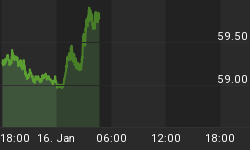Wireless charging is finally making its way to market as an energy source for electric vehicles, with BMW readying to start production in July for release by the end of summer. BMW’s existing 530e plug-in hybrid sedan will be the first EV coming from a major automaker with an inductive pad capable of charging the electric car.
The German automaker first announced the launch in September of last year, explaining how the 530e can be charged on the floor of the garage or parking space once the electric car is parked close enough to the inductive charging pad to work correctly.
The company will roll out wireless charging to other BMW models, but the 530e will introduce the technology to interested consumers. It uses a 3.2 kW current that allows the wireless unit to fully charge the EV within three-and-a-half hours. The charging pad uses an alternating magnetic field that carries power between a coil inside the pad itself and a coil built into the electric car to wirelessly charge the battery.
Wireless charging has been years in the making with major companies getting behind the technology but support from automakers taking a long time. Years from now, wireless charging is expected to play a vital role in mass adoption of EVs and alleviating resistance to charging the cars. Tests are being conducted by university researchers that could one day set up wireless charging points on highways. EV owners will be able to drive from cities such as San Francisco to Los Angeles without stopping for a charge.
Transferring power wirelessly goes back more than a century ago when electricity pioneer Nikola Tesla worked tirelessly but failed to bring wireless transmission beyond the Wardenclyffe Tower in Shoreham, New York. It was said to have eventually ruined his reputation and career as Tesla became obsessed over making the technology work the way radio waves had been sending communications over the airwaves.
Concerns do come up over the safety and reliability of working with wireless charging, similar to the misinformation that made acceptance of cell phones difficult a quarter century ago for consumers. Related: The Healthcare Fiasco Costing The U.S. $700B In Subsidies
There’s also the issue of which technology will win out — wireless or plug-in charging, with many companies investing heavily in existing charging infrastructures and backing coming from electric utilities and automakers. Companies such as ChargePoint are investing millions of dollars, usually with outside investors, to join roads around with world with a strong plug-in charging infrastructure.
Although he wasn’t part of naming the electric car company after Nikola Tesla at its formation, Tesla CEO Elon Musk has been impressed enough with the brilliant inventor to donate $1 million in 2014 to a new science museum at Wardenclyffe Tower. The event also honored Nikola’s 158th birthday.
Beyond that contribution, Musk has shown reservations over embracing wireless charging, instead devoting capital and resources to building the company’s plug-in Supercharger fast-charging network. He just showed off an updated map with expansion of Supercharger stations during the 2018-2019 time period.
There are currently 9,800 Superchargers in place around the world. Musk said that the company has thousands of new Supercharger stations in the construction and permit phase, with most all of them being installed in North America, Europe, and China.
Tesla has opened up a bit, allowing a group of engineers to build an aftermarket product for wirelessly charging the Tesla Model 3.
Mobile technology giant Qualcomm believes enough in wireless to start up a division years ago devoted to supplying carmakers with inductive charging gear. Qualcomm’s Halo technology offers users a dish-sized device under the car that matches up with a charging pad. Once the two are close enough to be aligned, charging can be done at speeds of 3.3kW, 6.6kW, or 20kW.
Related: Tech Giants Struggle To Comply With New Privacy Laws
Qualcomm believes it will help electric car owners to alleviate their range anxiety and frustration in finding an open plug-in charging port. EV drivers will be able to charge in parking areas without having to do the work of plugging in. The company foresees a day when EV drivers will be able to recharge and propel their cars along highways equipped to transfer electricity to moving vehicles.
A research team at Stanford University in Palo Alto, Calif., has been able to wirelessly transfer enough electricity to run a 1-milliwatt LED bulb. An electric car will need a lot more capability, but the Stanford team sees a day when a coil mounted on the bottom of an EV could receive electricity from coils that are connected to electric current embedded in the highway.
Wireless charging is still in its infancy stage, but observers will be monitoring the technology closely to see if serves as a viable alternative to plug-in chargers that can bring greater support for EVs.
By JonLeSage for Oilprice.com
More Top Reads From Safehaven.com

















